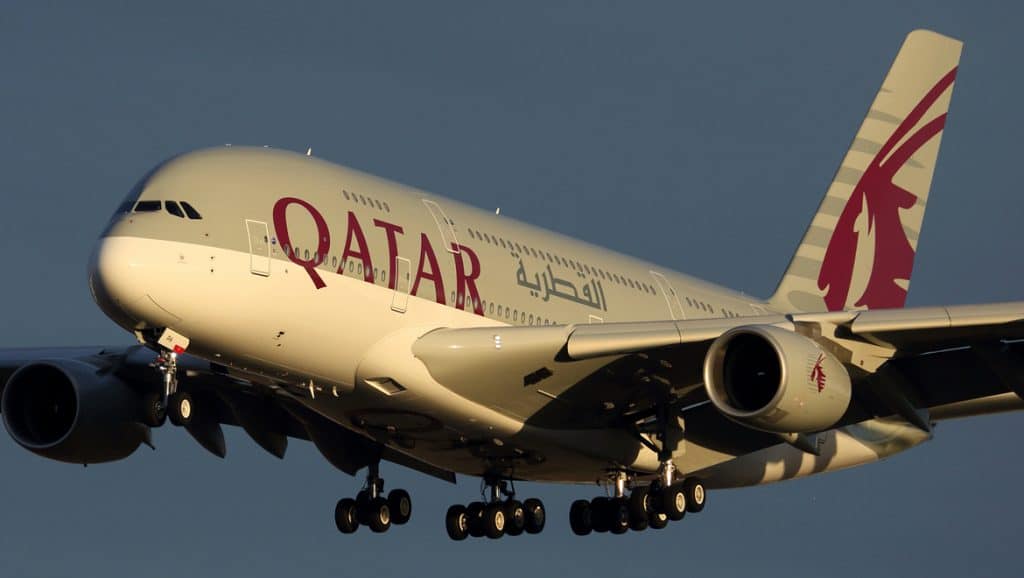
One of Qatar Airways’ Airbus A380 jets returned to the skies for the first time in over 18 months as the carrier “reluctantly” enters it into service again due to ongoing capacity shortage.
The superjumbo lifted off from Doha International Airport earlier this week to Hamad International Airport, the state-owned airline said in a statement.
“The recent grounding of 19 Qatar Airways A350 fleet has left us with no alternative but to temporarily bring some of our A380 fleet back on key winter routes,” said chief executive Akbar Al Baker.
In August, the carrier was forced by the Qatar Civil Aviation Authority to ground 19 of its A350 jets due to ongoing issues over the aircraft’s body, which was deteriorating faster than expected.
Al Baker said the issue “remains an unresolved matter between Qatar Airways and the manufacturer for which the root cause is yet to be understood”.
It’s expected five of the airline’s 10 A380 jets will be brought back into service on a “temporary basis” to support popular winter routes such as London Heathrow and Paris from 15 December.
In the meantime, the company also returned its A330 jets – one of its remaining long-haul workhorses – as it now faces a surge in travel demand during the post-pandemic recovery.
In late September, Qatar alluded to the possibility of returning the jet it once called a “mistake” to purchase in an interview.
Al Baker at the time said the company would initially fly five but may resort to entering all 10 into service yet again.
It comes after Qatar announced it was grounding at least half of the jets permanently in January, after almost a year of not flying the aircraft.
Since the pandemic paused most long-haul travel, numerous airlines permanently grounded or tendered the jets, unable to find long-term use for it.
Al Baker said the “difficult decision reflects gravity of the A350 issue”, but it will only remain a short-term plan as the company prefers more “fuel-efficient, twin-engine aircraft”.
“We continue to strongly urge Airbus to prioritise their investigations into the conclusive root cause of the issue affecting the A350 aircraft type, and ensure it proposes a permanent solution at the earliest opportunity to repair the damage and correct the underlying root cause.”
The wide-body aircraft was the largest passenger airliner being manufactured, but on 14 February 2019, Airbus announced it would no longer produce the jet after 2021 following low demand.
While airlines have opted for narrowbody aircraft to lead the post-pandemic recovery, numerous companies have returned to the jet after nearing a quicker-than-expected bounce back to travel normalcy.
British Airways, which now remains the last airline in Europe to operate the aircraft – as Lufthansa and Air France both retired its aircraft last year – signed an extension to return its A380 jets in November.
The company has 12 in its fleet and has extended its contract with them for a minimum of five years beginning in August 2022 to 2027 earliest.
Qantas, Australia’s flag carrier also returned the jet after being placed in storage for almost two years, touching down in Sydney on Tuesday.
The Flying Kangaroo had initially intended to keep its 12 A380s mothballed in the California desert until late 2023, in light of Australia’s fast-paced vaccination rollout.










